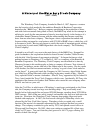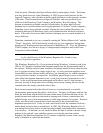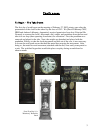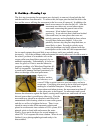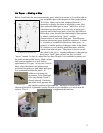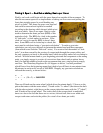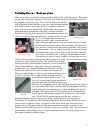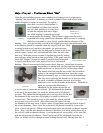1
A History of the Waterbury Clock Company
(1857 – 1942)
The Waterbury Clock Company, founded in March 5, 1857, began as a venture
into the lucrative clock market by the ambitious Benedict & Burnham Corporation,
heretofore the “B&B Corp.” Being a company specializing in the production of brass,
and with clock movements being made of brass, the B&B Corp. made its first attempt at
utilizing its goods for the measurement of time by investing heavily in the business of a
clockmaker named Chauncey Jerome with the understanding that Jerome would buy
brass from no other brass company. Thus began a short cooperation that ended with
Jerome striking out upon his own business with $75,000 of B&B’s brass, which they sold
to Jerome at a profit. Having only begun to satisfy the needs of impatient people waiting
for, and trying to catch trains, B&B began their own clock company: The Waterbury
Clock Company!
It started in an old mill, very near to the main factory of the B&B Corp. Strapped for
good clockmakers, the corporation decided to honor Jerome’s brother, Noble Jerome,
with the title “chief foreman of movement production.” So began the famous clock
making business in Waterbury, CT on March 5, 1857 as a company of the Benedict &
Burnham Corporation. The Waterbury Clock Company was described in its time by
Chauncey Jerome in his autobiography as being a company of famous “first citizens of
that place” including a senator and one of the richest men in the country. He also spoke
of his brother, the chief movement mechanic, as being “as good a brass clock maker as
can be found.” A great grief struck the Company in 1861, however, when Noble Jerome
was killed by a falling balustrade while strolling in the merry month of May. Silus B.
Terry replaced Noble as master clockmaker. Silus B. Terry, apprenticed by his father Eli
Terry, later founded the Terry Clock Company with his sons. Incidentally, Eli Terry also
apprenticed the famous clock maker Seth Thomas who created his own company when
Silus B. was but two years old.
After the Civil War, in which most of Waterbury’s employees participated on the Union
side, the Company erected two large case-building shops. They were hardly used,
though, before both caught fire and caused $25,000 damage, equaling about $270,000 in
2002 currency. Half of that was safely insured, and another case shop was built upon the
same site. From here, the Waterbury Clock Company kept getting larger and more
flushed with employees. In 1867, the first known catalogue of Waterbury clocks was
released by the New York Sales Agency. Waterbury clocks occupied only a small
fraction of the myriad of companies represented by the catalogue but that was soon to
change. The company continued to grow and by 1875, had opened several offices in
Chicago and San Francisco. By 1881, their own catalogue contained 94 of their own
clocks on 122 pages. Ten years later they had grown to a full 175 pages offering 304
models of their own design.






